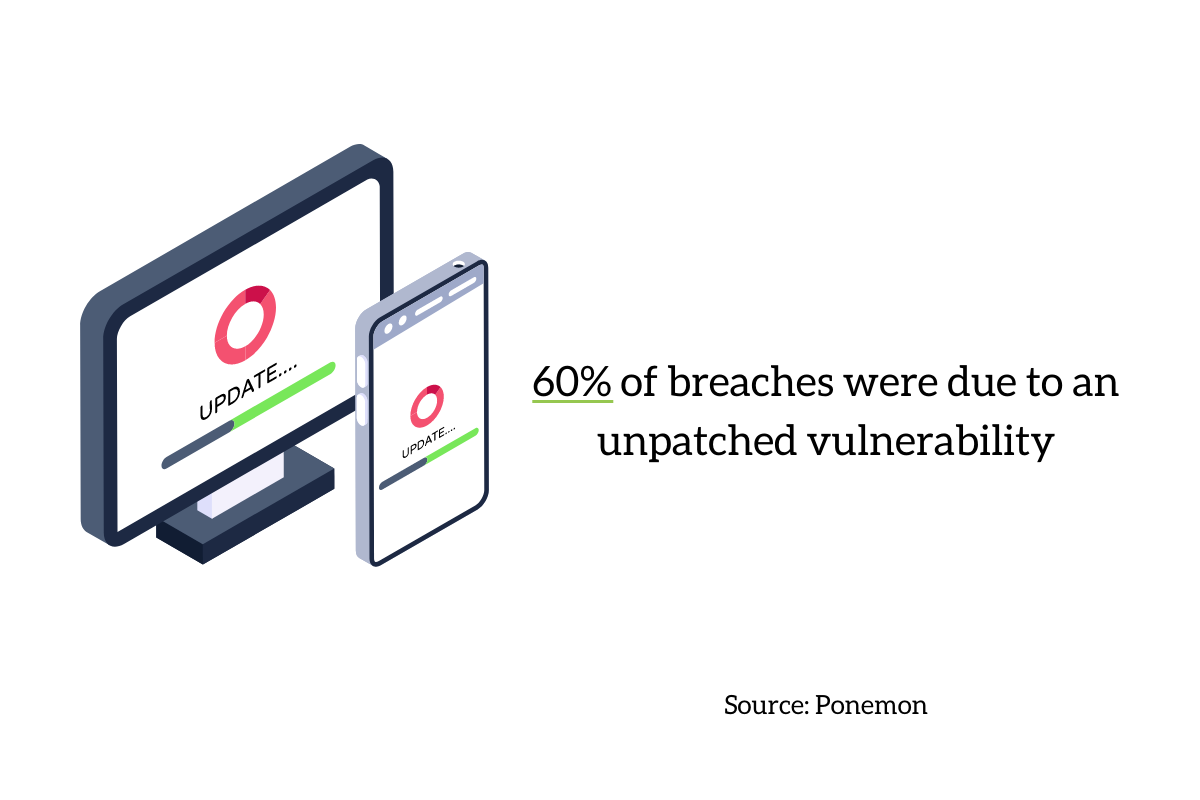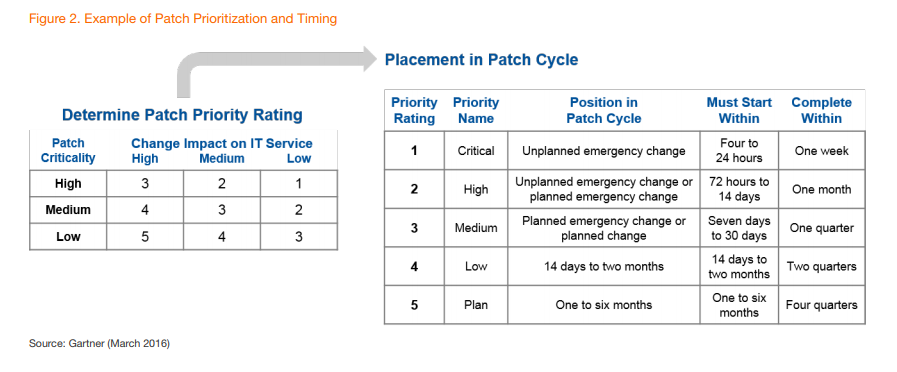Let’s paint a picture:
You’re sitting there working on a Friday and a little “Hey you’re due for software updates!” reminder pops up on your computer. And, just like every time it’s happened this week already, you click “Ignore” – you’ll do it next week.
Whether you meant to or not, in skipping this or any patch you automatically put yourself and your organization’s data at a major, unnecessary risk for a potential breach. Just ask Equifax, who skipped a full patch on its systems in 2017, a decision that caused one of the biggest data breaches in the history of the Internet.
To discover how patches work – and what you can do to ensure no one is skipping their updates at your organization – we’ve put together this useful blog on the topic. Let’s get going.
{{cta(‘8ebfe3cf-a624-4bba-8692-99461feb9a71′,’justifycenter’)}}
What Is Patch Management?
Patches get their name from the clothing item commonly used to fix holes in pants and shirts. Just like their physical counterparts, digital patches work to plug digital holes or problems (aka “bugs” and “vulnerabilities”) that have either developed over time or were otherwise unforeseen.
Updates can be the bane of many IT managers’ very existence. A recent survey discovered that 71% of IT and security professionals found manual patching to be overly complex, cumbersome, and time-consuming.
To manage patches, known by the effortlessly creative name “patch management”, means to distribute and apply updates to your working software as it becomes available. Common areas at businesses that typically need patches include operating systems, applications, and embedded systems (like network equipment).
When a vulnerability is identified after the release of a piece of software by OS vendors, application vendors, and even network equipment vendors, a patch is often used to fix the problem. Doing so helps ensure that assets in your digital systems are not susceptible to exploitation through such common problems during software development.
Why Do We Need Patch Management?
We already know that one simple action can save you from 99.9% of all digital attacks on your accounts, so it shouldn’t seem too far-fetched that regular patching could help keep that pesky 0.1% from ever becoming a talking point.
In fact, according to a Ponemon Institute survey:
- 60% of breach victims said they were breached due to an unpatched known vulnerability where a patch update was simply not applied
- 62% were unaware that their organizations were vulnerable prior to the data breach
- 52% of respondents said their organizations are at a disadvantage in responding to vulnerabilities because they use manual processes.
To ensure patches are being managed properly, many businesses opt for patch management systems, which are often separate products or part of bigger cyber security suites. Whether it’s a product or an added feature is mostly irrelevant, because either way the system manages multiple software patches that are required at once, keeping your infrastructure up-to-date and protected from threats.
At many businesses, patch management is typically controlled by a system admin who sets up the software chosen according to the organization’s internal security policy, structure, and needs like specific functionality requirements. Patch management ensures that patches are applied on a timely basis and are not subject to time delays because the patch is overlooked, or IT resources are stretched.
Gartner put together this table that can be really useful in understanding how to prioritize your organization’s patches:
How Can Patch Management Help My Business?
Patch management is critical for every business of every size. Whether your organization is running low on resources or just needs to automate a difficult and critical task, patch management should be near the top of every manager’s list.
Automated patch management means your client’s data is safeguarded from leaks and other rapidly developing situations. All critical patches must be applied as soon as possible to avoid data theft and severe brand damage that often follows a security breach. That means applying every patch as soon as it becomes available. Timely patch management is especially important for government, healthcare, and financial institutions where a breach can mean staggering losses – from compliance penalties alone – following a data leak resulting from an unpatched vulnerability.
Patching also helps keep your business or customers from facing any downtime. Patching everything you can, from OS to applications and beyond, regularly ensures that you have the most up-to-date features a vendor has to offer – which generally also helps improve your overall system performance.
When developing a patch management strategy for your business, keep in mind these objectives:
- Client & server operating systems, and business productivity applications, should be kept within the mainstream support cycle of each respective vendor.
- Business applications and operating systems should be updated with security patches to maintain compliance with your applicable governing security standards.
- The ability to easily leverage every new productivity enhancement released through software updates.
- An established testing and release process that minimizes the business risk of regular software change.
- Develop a well-documented baseline software standard for your operating systems and applications.
Conclusion
Establishing an effective automated patch management system can literally be the difference between being a literal textbook example of what never to do (like Equifax) or just another business going about their day-to-day with no major news to talk about besides regular success.
So no matter the size of your business, what you do, or where it is your team calls home, it’s important to constantly be updating your software. And with that, we leave you with the immortal words of… well, every software developer and IT specialist and everyone else associated with cyber security in any way… Update. Your. Software!
For more information on patch management and other vital ways your business can protect itself from cyber criminals, give us a call at (864) 552-1291 and we’ll help you evaluate capabilities and options. Also, sign up for PTG Tech Talk and consider following us on LinkedIn, Facebook, and Twitter!
PS – Did we mention you should update your software?


